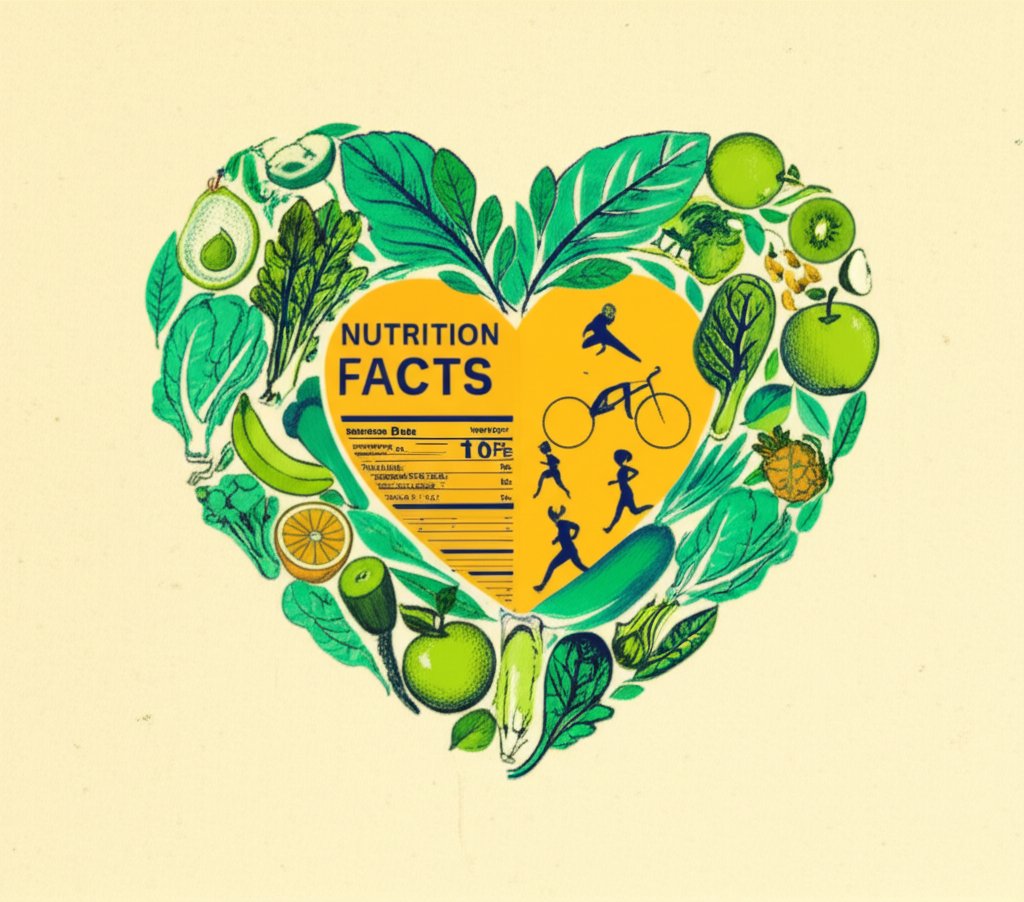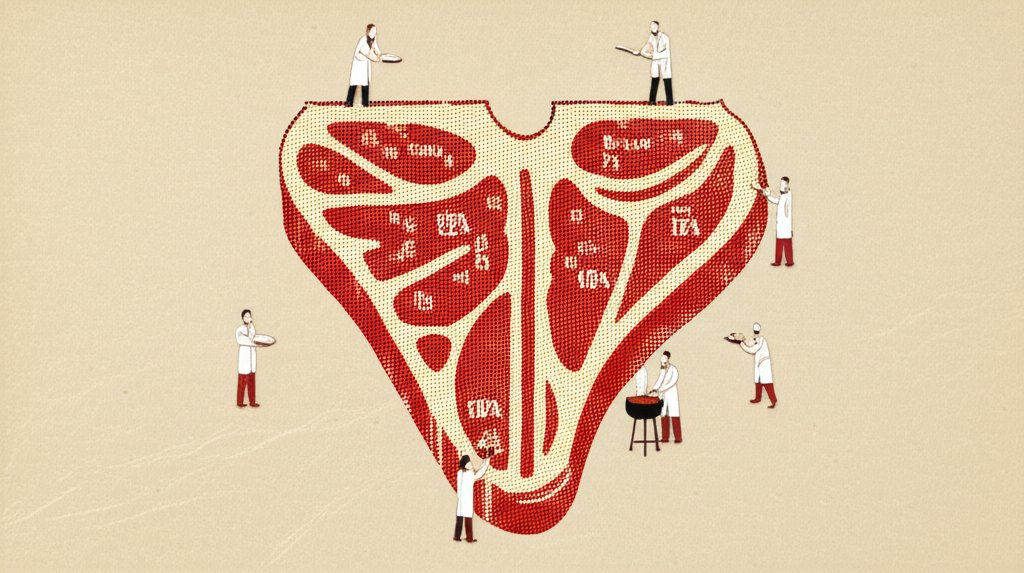Ever wondered exactly what you’re getting nutritionally when you order that juicy T bone steak? It’s more than just a satisfying meal; it’s a powerhouse of protein and other nutrients. But like any food, understanding the specifics helps you make informed choices.
At a glance:
- Discover the macronutrient breakdown of a T bone steak: protein, fat, and carbohydrates (or lack thereof).
- Understand the key vitamins and minerals you’re consuming.
- Learn how T bone steak fits into a balanced diet.
- Get practical tips on choosing leaner cuts and healthier cooking methods.
- Address common concerns about cholesterol and saturated fat.
Decoding the T Bone: What Makes it Unique?
The T bone steak is a cut of beef taken from the short loin. What sets it apart is the “T”-shaped bone running through it, with meat on both sides: the tenderloin (the most tender cut) and the strip steak (also known as the New York strip). This dual nature means you’re getting two distinct textures and flavors in one steak, but it also impacts the overall T bone steak nutrition facts.
T Bone Steak Nutrition Facts: The Numbers Game (Per Serving)
A typical 1-inch thick T bone steak (approximately 16 ounces or 454 grams) provides a substantial amount of nutrients. Keep in mind that these values can vary based on the grade of beef (e.g., Prime, Choice, Select) and the amount of fat trimmed. Below is a rough estimate:
- Calories: 1155
- Protein: 82 grams
- Fat: 90 grams
- Saturated Fat: 40 grams
- Monounsaturated Fat: 40 grams
- Polyunsaturated Fat: 4 grams
- Carbohydrates: 0 grams
- Fiber: 0 grams
- Sugars: 0 grams
- Cholesterol: 260 mg
- Sodium: 140 mg
- Iron: 8 mg (44% DV)
- Zinc: 14 mg (127% DV)
- Vitamin B12: 6 mcg (250% DV)
These numbers highlight that T bone steak is primarily a source of protein and fat. It’s virtually carbohydrate-free and provides significant amounts of iron, zinc, and Vitamin B12. How does this compare to a lighter snack choice, like a Strawberry Banana Smoothie? Well, it’s vastly different. To get a better understanding of how your diet might measure up, including alternatives, check out Full Nutritional Breakdown for a broader perspective.
The Protein Powerhouse: Building Blocks for Your Body

The high protein content of T bone steak is one of its most significant nutritional benefits. Protein is essential for:
- Muscle building and repair: It provides the amino acids needed to synthesize new muscle tissue and repair damaged fibers after exercise.
- Enzyme production: Many enzymes, which catalyze biochemical reactions in the body, are proteins.
- Hormone regulation: Hormones like insulin and growth hormone are protein-based.
- Immune function: Antibodies, which protect against infection, are also proteins.
- Satiety: Protein is more satiating than carbohydrates or fats, helping you feel full and satisfied after a meal.
Example: A bodybuilder aiming to increase muscle mass might incorporate T bone steak into their diet to ensure adequate protein intake.
Fat Content: Friend or Foe?
The fat content of T bone steak is considerable, and much of it is saturated fat. Here’s a balanced look:
- Saturated fat: While once demonized, current research suggests that saturated fat’s impact on heart health is more nuanced than previously thought. It can raise LDL (“bad”) cholesterol, but also raises HDL (“good”) cholesterol. Moderation is key. The American Heart Association recommends limiting saturated fat to 5-6% of total daily calories.
- Monounsaturated fat: This type of fat is considered heart-healthy and is abundant in T bone steak. It can help lower LDL cholesterol levels.
- Polyunsaturated fat: T bone steak also contains small amounts of polyunsaturated fats, including omega-3 and omega-6 fatty acids, which are essential for brain health and reducing inflammation.
Practical Tip: Trimming visible fat before cooking can significantly reduce the overall fat content of your steak.
Vitamins and Minerals: Beyond the Macros
Beyond protein and fat, T bone steak provides valuable micronutrients:
- Iron: Essential for carrying oxygen in the blood. The heme iron found in red meat is more easily absorbed than non-heme iron from plant-based sources.
- Zinc: Important for immune function, wound healing, and cell growth.
- Vitamin B12: Crucial for nerve function and red blood cell formation. Vitamin B12 is primarily found in animal products, making T bone steak a valuable source for those who aren’t vegetarian or vegan.
- Other B vitamins: T bone steak contains smaller amounts of other B vitamins, such as niacin (B3) and riboflavin (B2), which are involved in energy metabolism.
Case Snippet: Individuals with iron deficiency anemia may benefit from including red meat like T bone steak in their diet to improve iron levels, under the guidance of a healthcare professional.
T Bone Steak and a Balanced Diet: Making it Work

While T bone steak can be a nutritious part of a balanced diet, it’s crucial to consider portion size and cooking methods:
- Portion control: A reasonable serving size is typically 3-4 ounces (85-113 grams) of cooked steak. This allows you to enjoy the nutritional benefits without overdoing the fat and calories.
- Cooking methods: Grilling, broiling, or pan-searing with minimal added oil are healthier options than deep-frying.
- Pairing with healthy sides: Complement your T bone steak with plenty of vegetables, whole grains, and legumes to create a well-rounded meal. Think a side of roasted asparagus, quinoa, or a mixed green salad.
Decision Tree:
- Consider your overall dietary needs: Are you trying to gain muscle, lose weight, or maintain your current weight?
- Check your saturated fat intake: Are you already consuming a lot of saturated fat from other sources?
- Choose leaner cuts: Opt for “Choice” or “Select” grade T bone steaks, which tend to have less marbling (intramuscular fat).
- Trim visible fat: Remove excess fat before cooking.
- Cook using healthy methods: Grill, broil, or pan-sear with minimal oil.
- Pair with nutritious sides: Load up on vegetables, whole grains, and legumes.
- Enjoy in moderation: Include T bone steak as part of a varied and balanced diet.
Practical Playbook: Tips for Healthy T Bone Consumption
- Choose the right cut: “Choice” or “Select” grades are typically leaner than “Prime.” Look for steaks with less marbling.
- Trim, trim, trim: Remove as much visible fat as possible before cooking.
- Marinate for flavor (and potential health benefits): Marinades containing herbs and spices can add flavor without adding extra calories or unhealthy fats. Some studies suggest that certain marinades can reduce the formation of heterocyclic amines (HCAs), potentially harmful compounds formed during high-heat cooking.
- Consider sous vide: This cooking method allows you to cook the steak to a precise temperature, resulting in a tender and juicy steak without overcooking it. Finish with a quick sear for added flavor.
- Don’t forget the sides: Make vegetables the star of your plate.
Quick Answers: Addressing Common Questions
Q: Is T bone steak bad for my cholesterol?
A: T bone steak contains cholesterol and saturated fat, which can raise LDL (“bad”) cholesterol levels in some people. However, it also contains monounsaturated fat, which can lower LDL cholesterol. The overall impact on cholesterol depends on individual factors and dietary choices. Moderation and a balanced diet are key.
Q: Can I eat T bone steak if I’m trying to lose weight?
A: Yes, you can include T bone steak in a weight loss diet, but portion control is essential. Choose leaner cuts, trim visible fat, and cook using healthy methods. The high protein content can help you feel full and satisfied, potentially reducing overall calorie intake.
Q: How often can I eat T bone steak?
A: There’s no one-size-fits-all answer. It depends on your individual dietary needs and health status. As a general guideline, consuming red meat 1-2 times per week in moderate portions is considered acceptable for most people.
Actionable Close: Make Informed Choices, Enjoy Responsibly
Understanding T bone steak nutrition facts empowers you to make informed choices about incorporating this flavorful cut into your diet. By focusing on portion control, leaner cuts, healthy cooking methods, and balanced sides, you can enjoy the benefits of protein, iron, zinc, and B vitamins without overdoing the fat and calories. Remember that a balanced and varied diet is always the best approach to overall health and well-being.
- Why Glass Boxes for Lunch Are Trending for Meal Prep - December 17, 2025
- Bento Box Glass Offers Practical, Eco-Friendly Meal Storage - December 16, 2025
- The Best Bento Box Price For Your Perfect Packed Lunch - December 15, 2025










